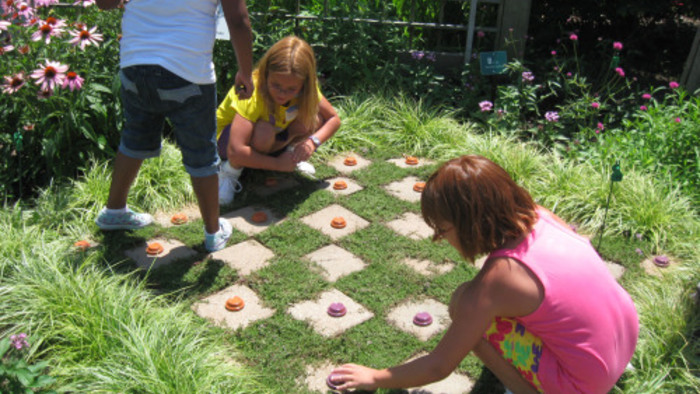
Sunflowers not only attract pollinating insects while they’re blooming, but at season’s end they become an excellent food source for wild birds.
Here’s what you’ll need:
- Sunflower heads—the bigger the better
- Florist’s wire
- Screwdriver
- Craft or Exact-o knife*
- Ink pen*
- Millet sprays and raffia*
*Optional
Birds appreciate a little help finding food for the cold season. Between that and the natural entertaining antics of birds, kids are thrilled to be a part of bird feeding by making a natural bird feeder out of sunflower seed heads. They’re super easy to make, and this simple craft shows kids how nature comes full circle from the flower seeds that they planted in their yard becoming bird food when the new seeds are formed.
Birds that are attracted to sunflower heads include jays, grosbeaks, goldfinches, juncos, buntings, pine siskins, titmice, bluebirds, blackbirds, finches, cardinals, and chickadees. They all benefit from the high nutritional value sunflower seeds provide—especially heading into the winter months. They’re loaded with minerals like potassium, calcium, magnesium, and iron, as well as vitamin B complex. Sunflower seeds are also valuable as a source for protein, fiber, and polyunsaturated fat.
The best sunflower varieties for the job are the larger ones like Sunzilla, Giant Gray Stripe, Russian Mammoth. These sunflower types because they’re easier to work with and end up lasting longer as a feeder. If you’ve grown sunflowers in your yard, when the sunflowers look well formed and the heads begin to dry out, cut the top ¼ off of the sunflowers and let them dry out in a cool and well-ventilated area. They can be hung upside down or placed in a large empty vase (without water). If you confine them to a bag or container, mold could form before the heads have properly dried.
If you haven’t grown any this year, don’t give up just yet. Ask friends and neighbors if they have any spent sunflower heads in their yards, or check out your local farmers market. You’ll know they’re dry when the fronts of the heads turn a crispy brown and the backs of the heads are yellow.
Cut off the remaining stem from the sunflower when the flower heads are completely dry. Make a couple of holes near the top of the head with the screwdriver an inch or two apart. The florist’s wire can now be threaded through the holes and the ends secured together so it can be hung on a fence or tree branch for wild birds to feast on. Of course, the sunflowers can be left on the dead plants right where they grew and the birds will find them, too, but it’s nice to bring them closer to your house or window to enjoy the wild dining.
A variation of this craft is to lay the front of the flower face down and use your pen to make a circle in the middle of the back of the flower head. Then carefully cut the circle out with the craft knife or blade. (The knife should only be used by an adult.) When you turn it back over, the flower head will now resemble a wreath. You can also tie long millet sprays onto the sunflower wreath as an added decoration and snack for the birds. Also, tying earth-colored raffia as a natural bow makes it extra festive for the winter season.



















Comments
Log in or create an account to post a comment.
Sign up Log in